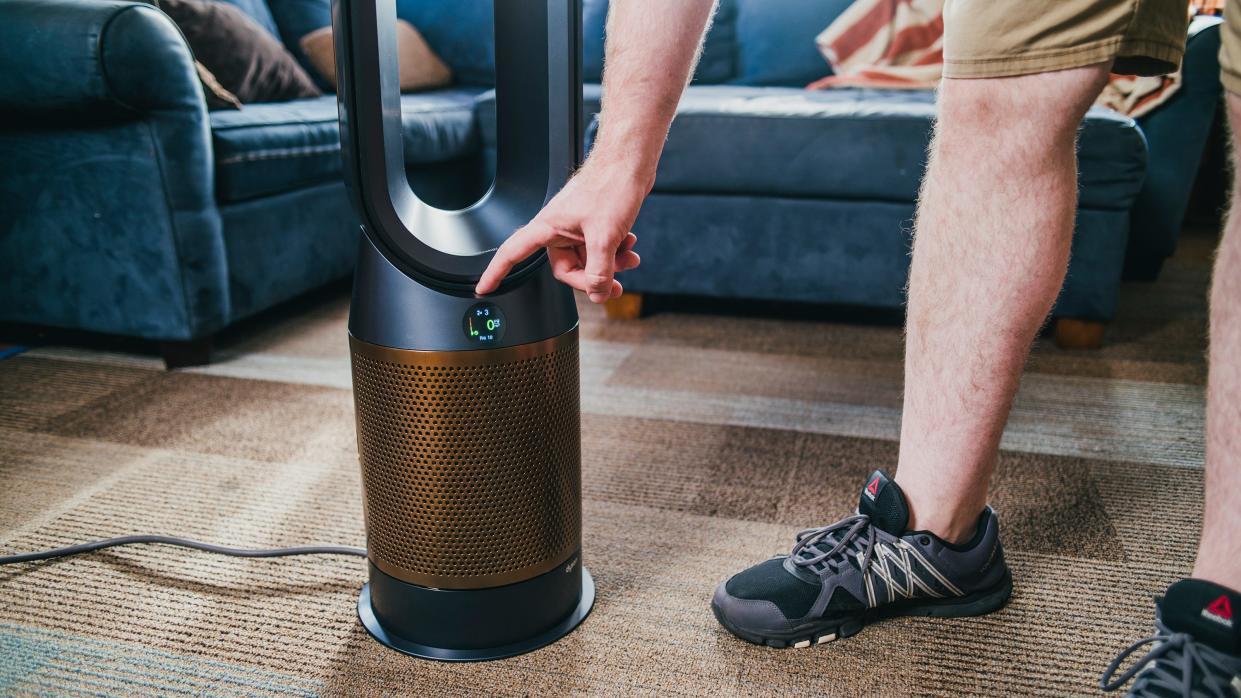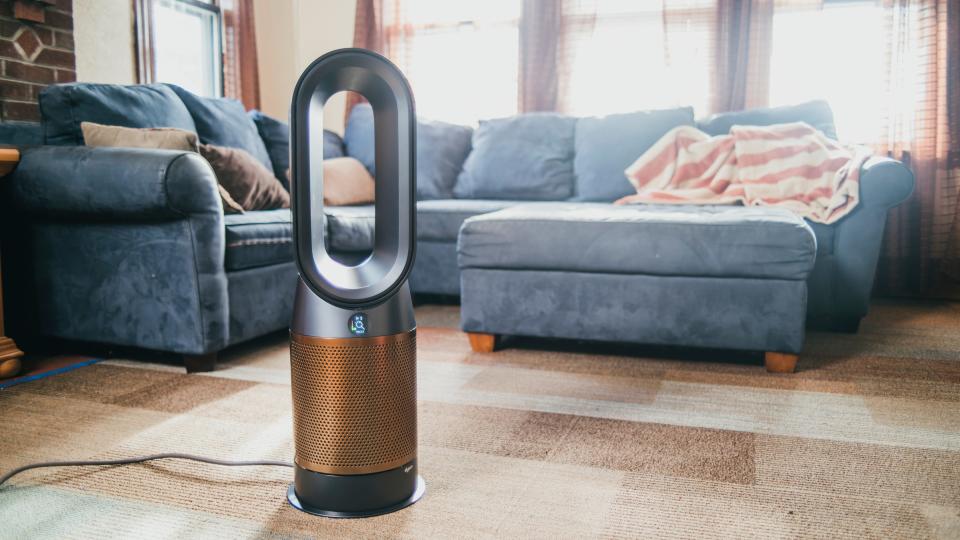Wildfire smoke affecting your area? Here's how to improve your home's air quality

— Recommendations are independently chosen by Reviewed’s editors. Purchases you make through our links may earn us a commission.
The most recent wildfire threat—the Alisal Fire—has taken aim along coastal Santa Babara County, erupting earlier this week and ravaging over 12.5 square miles of land. Firefighters continue to battle the wildfire as evacuation orders, power outages and road closures are implemented across the county.
Need help finding products? Sign up for our weekly newsletter. It’s free and you can unsubscribe at any time.
Many homeowners are seeking ways to improve their home's air quality as smoke particles move through their area. It's best to follow guidance from agencies like the Environmental Protection Agency (EPA), which provides helpful tips on how to best keep wildfire smoke out of your home. One recommendation from the EPA is to invest in a portable air cleaner, or air purifier, to improve your indoor air quality. These became highly sought-after devices as COVID-19 concerns rose as they can reduce indoor exposure to virus particles, allergens, mold, as well as smog and wildfire smoke. The best air purifier we've tested—the Winix 5500-2—does an exceptional job in removing tough smoke scents, using a HEPA filter, carbon filter and plasma technology to combat airborne pollutants.
Wildfire season generally lasts through November, so if you're on the fence about investing in an air purifier—this is your sign to get one and to get it before wildfire smoke is affecting your area. Here's everything you need to know about improving your home's air quality and how to select the best air purifier for your needs.
What you need to know about smoke and smog
Wildfire smoke is a collection of harmful particulates that can be especially dangerous to vulnerable populations like young children and the elderly. According to the EPA, it's comprised of a "complex mixture of gases and fine particles produced when wood and other organic materials burn." The biggest health threat from smoke is those fine particles, as they can easily get into your eyes and respiratory system. This can cause issues like burning eyes, runny nose, bronchitis, and it can also exasperate chronic heart and lung diseases. Even if you're generally healthy, it's best to avoid breathing in smoke both indoors and out if possible.
Smog is another significant air pollution threat that contributes to poor air quality. It forms on warm, sunny days and is typically made worse by chemicals from vehicle tailpipes and both industrial and power plant smokestacks, among other things. Currently, 135 million Americans live in areas where the air is polluted, according to a report by the American Lung Association, and it's expected to worsen over time at the current rate of climate change.
How to keep smoke and other air pollutants out of the home
Keeping wildfire smoke and smog out of the house can help to reduce undesirable health effects. But how does it enter the home in the first place? The EPA says outdoor air can enter and leave the home through natural ventilation, mechanical ventilation or infiltration. Infiltration is where air flows through very small joints and cracks in the walls, floors, ceiling, and around windows and doors.
It can be tricky to block all of these minor openings, so an air purifier can help to combat the particles that inevitably breach your home. It's best to secure an air purifier before a smoke event occurs instead of waiting for an event to happen. The smoke event itself could make it hazardous to go outside, to drive, or could lead to a shortage of local supplies, making it nearly impossible to find one.
What to know about air purifiers

If you're still not sure if an air purifier is right for you, consider the other benefits of having one, in addition to the boosted protection from wildfire smoke. Air purifiers can help to combat indoor pollutants, too, such as allergens, bacteria, fungal and mold spores, viruses and more. You'll be thankful you have one come cold and flu season.
It's important to note that an air purifier's efficacy depends on both the purifier itself and the pollution level of the air around you. "Most air purifiers can remove at least 99.97% of particles as small as 0.3 microns if they use high-efficiency particulate air (HEPA) filters as the filtration media," says Dr. Wei-Ning Wang, associate professor of mechanical and nuclear engineering at the Virginia Commonwealth University College of Engineering.
You can find air purifiers with HEPA filters sprinkled throughout our list of the best air purifiers we've ever tested. In fact, all of our top choices feature HEPA filters, along with other purifying technology that makes for an incredibly powerful clean. "High-efficiency particulate air (HEPA) filters are great at filtering the particulate matter. But with high smoke exposure, an active carbon filter is also helpful," says Dr. Kelli Williams, an allergist and immunologist at the Medical University of South Carolina.
Another factor in an air purifier's effectiveness is how well it circulates the air. "Make sure the entire room has purified air by ensuring proper air circulation. Look for a purifier that has a built-in air projection system," advises Jess Le Dinh, engineering lead at Dyson. "This [system] pushes clean air into the room, circulating dirty air back to the machine to be purified. Without proper air circulation, you risk only purifying a small area of the room."
The best air purifiers for combatting wildfire smoke
Of all the air purifiers we've tested in the Reviewed labs, our best overall choice is the Winix 5500-2 which features a true HEPA filter, a carbon filter and it uses plasma at safe levels to improve your home's air quality. Although it may not be the most technologically advanced device on our list, it is intuitive, easy to use and has thoughtful features that make it a great choice.
For a smart home air purifier that can easily be integrated with Alexa and Google Assistant, we recommend the LG PuriCare 360-Degree Air Purifier. This high-end purifier excels in removing fragrance smells, although it didn't remove heavier smells like cigarette smoke like the Winix 5500-2. However, if smart performance and tracking is important to you, the LG PuriCare can be controlled right from your phone through the SmartThinQ app, with data that can help you track your air quality.
If you're looking for more options or having trouble finding one of the above in stock, you can shop all of our top-tested air purifiers here.
The product experts at Reviewed have all your shopping needs covered. Follow Reviewed on Facebook, Twitter, Instagram, TikTok or Flipboard for the latest deals, product reviews and more.
Prices were accurate at the time this article was published but may change over time.
This article originally appeared on Reviewed: How to improve indoor air quality from wildfire smoke and smog

